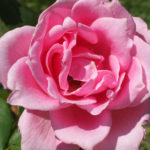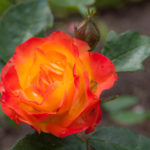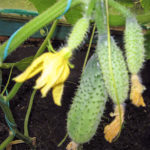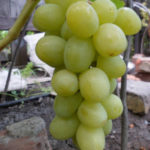Thuja folded Kornik
One of the most popular conifers today in terms of landscape design is thuja. This genus is represented by five species. One of them is thuja folded or giant. Its distribution area covers the Pacific coast, located along the western part of the North American continent. Let's talk about a bright representative of this species - the Kornik variety (Thuja plicata Kornik).
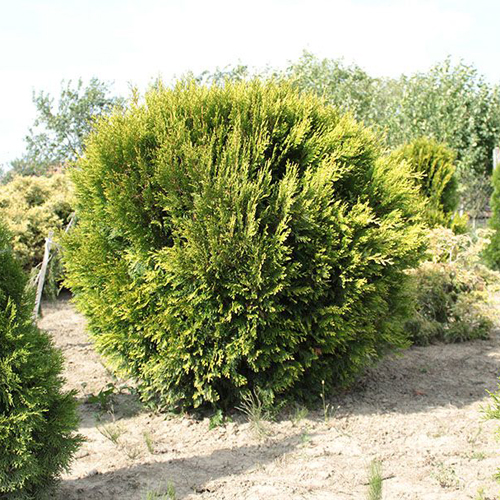
Description of appearance and features
Our hero was bred by Polish breeders. This is a powerful evergreen tree with a beautiful pyramidal crown shape and a high growth rate. Each year, the size of the shoots increases by 30 cm. The height of the culture at the age of 10 is approximately 2.5-3 meters.
Ephedra branches are wide and short. They are arranged horizontally and are covered with pointed, scaly, dense, shiny needles of a rich green color, which remain so all year round. True, in winter the plant can acquire a light bronze tint. In addition, the tops of young shoots of this culture are colored golden yellow. When rubbed, the needles exude a spicy aroma. The ends of the branches of the coniferous tree may droop slightly. The fruits of the plant are leathery small cones of an oblong-ovoid shape, changing the original yellow-green color to brown as they ripen.
This variety of folded thuja is frost-resistant - it is not afraid of air temperature drops in winter to -25 ° C. It also has good shade tolerance and excellent immunity to diseases and insect pests characteristic of conifers. The culture can be cultivated without problems in urban conditions, since air polluted by exhaust gases and caustic emissions does not have a detrimental effect on its development and decorative appearance. Kornik lives in a favorable environment for 3-5 centuries.

Growing and care
Despite the comfortable feeling in the shade, it is better to place the ephedra in sunny or semi-shady places. This will help preserve the density, shine and richness of the shade of its needles. The area where you plan to plant the thuja must be protected from strong winds. The culture is undemanding to soils, but it is preferable to plant the Polish beauty in a humus-rich, loose, moderately moist soil with a slightly acidic reaction. The plant does not like the high density of the substrate, as does the drying out of the earthy coma. In such conditions, the growth of the culture slows down, and the crown loses its natural density.
Water the tree in the evenings, at least once every 10 days. In a dry, hot period, the frequency of soil moisture under the plant should be increased. Make sure that the air humidity around the ephedra is also high enough. For this purpose, it is advisable to sprinkle the crown more often with water at room temperature. Useful for ornamental coniferous plants and feeding. The right time for them is spring and summer. In the course of this procedure, complex mineral fertilizers designed specifically for thuja are applied under Kornik. Sanitary pruning and shaping haircuts are important for maintaining the decorativeness of the plant. Both of them should be carried out in the spring: first, the ephedra is removed from damaged and dry branches, and then the crown is given the desired shape. High winter hardiness is not a reason to refuse to shelter an evergreen plant for the winter. Young trees need to be insulated before the onset of cold weather in order to maintain their vitality. In the future, the shelter will not interfere with adult specimens, because they must be protected from winter and spring sunburn. It is advisable to tie the thuja branches with twine in the fall in order to avoid damage by snow.Above, a European beauty is wrapped in burlap.
Use cases
Kornik is recommended by landscape designers for decorating, first of all, hedges. In this case, you can alternate it with other tall coniferous crops. Such living walls prevent dust and winds from entering the site. Evergreen culture is successfully combined with conifers, which differ from it in size and color of scaly or needle-like plumage. Such compositions often also include decorative flowering perennial shrubs, for example, peonies, roses. The variety is ideal for landscaping squares and parks. It is used in single plantings against the backdrop of a neatly trimmed, bright green grass lawn.
